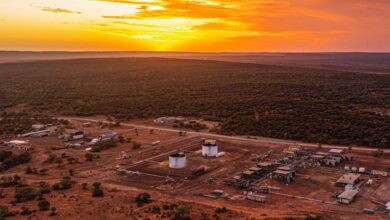ASTM subcommittee to develop hydraulic fracturing standards
By Katie Mazerov, contributing editor
ASTM International has formed a subcommittee to develop standards for hydraulic fracturing. Subcommittee D18.26, which held its first meeting in January, includes 230 volunteer members from operating companies, service companies, geotechnical and geo-environmental firms and regulators, said Robert Morgan, director of technical committee operations for ASTM. Member companies include BP, Chevron, Chesapeake Energy, Schlumberger and Halliburton.
The committee has identified several areas of focus:
• Site investigation;
• Site construction;
• Permitting;
• Drilling;
• Fracturing and stimulation;
• Drilling fluid characteristics;
• Waste management of completion fluid;
• Site monitoring and well abandonment; and
• Cementing and grouting.
The standards are strictly voluntary. Once they are developed, they will be ASTM standards that can be used in the marketplace and potentially cited in federal regulations, which currently reference some 2,500 standards.
“One of the reasons ASTM has been so successful is that it gets industry involved in the process and brings the regulatory community to the table to develop standards everyone can live with,” Mr Morgan said. “The process allows industry to be proactive rather than have a governmental entity determine what the standards should be. ASTM is an open and transparent organization, and anyone who has an interest in the process can get involved.”
The subcommittee, formed after an exploratory task force reached out to industry stakeholders, also works closely with related organizations to avoid duplicative efforts. One of the first endeavors of the task force was to review existing API documents related to hydraulic fracturing. “If another organization is meeting a marketplace need, ASTM typically does not get involved,” Mr Morgan noted. “We looked for voids in the API documents where ASTM standards could supplement the work that has already been done.
“Another objective in this effort is that ASTM does not want it to come across as an environmental watchdog activity but rather as a way to make the practice of hydraulic fracturing safe and efficient,” he continued. For example, one issue discussed at the initial meeting was proppant shape, which can make a significant difference in keeping fractures open for better flow of hydrocarbons.
The standards development process could potentially take more than a year, depending on the complexity of the topics being addressed. “The process depends on the urgency of the needs the members have identified,” Mr Morgan said. “The ASTM process has a proven history, and one of the reasons it has lasted so long is because of the professionals involved. This is a level playing field where everyone has an equal say.”
For more information on how to get involved in Subcommittee D18.26, please visit www.astm.org/COMMIT/D1826.htm.




